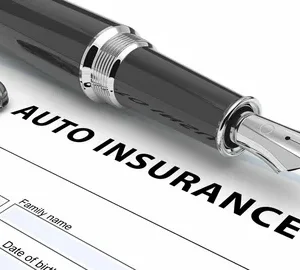When you open your annual auto insurance bill and gasp at the total, it may feel like magic—and not the good kind. Yet behind those seemingly arbitrary numbers lies a finely tuned scientific and actuarial process. In 2025, with rapid advancements in data analytics and usage-based models, understanding how auto insurance premiums are calculated is more crucial than ever. Whether you’re shopping for your first policy or simply seeking ways to shave off a few dollars, this deep dive will demystify the process and arm you with insider secrets to keep your rates competitive.
Understanding Auto Insurance Premiums
At its core, a car insurance premium is the price you pay for coverage, typically billed monthly, semi-annually, or annually. Insurers set premiums to ensure that the total collected exceeds the amount they pay out in claims—thus maintaining profitability. Premiums hinge on two fundamental elements:
- Expected Claim Costs: Actuarial tables predict the likelihood and severity of claims based on historical data.
- Administrative and Profit Margins: Overhead, customer service, marketing, and a modest profit margin are built into the rate.
In 2025, insurers leverage cutting-edge AI models to refine these predictions, drawing on richer datasets—from driving behavior to real-time traffic patterns—to estimate risk more precisely .
Key Risk Factors That Influence Your Premium
Insurance companies evaluate dozens of variables when calculating your premium. While specific weightings vary by provider and state, the most influential risk factors include:
- Driving Record: Prior accidents, traffic violations, and DUI convictions can skyrocket rates.
- Age and Gender: Young, inexperienced drivers (especially males under 25) typically face higher premiums.
- Location: Urban areas with high theft or accident rates cost more to insure.
- Vehicle Type: High-performance, luxury, or repair-expensive vehicles draw steeper rates.
- Credit Score: In most states, a strong credit history signals lower risk.
- Coverage Level & Deductible: More comprehensive coverage and lower deductibles increase premiums.
“From your age to your driving history to coverage choices, auto insurers evaluate multiple factors when calculating what you’ll pay” (forbes.com).
How Insurers Assess Your Driving Record
Your driving record serves as the single most potent predictor of future claims. Insurers pull a Motor Vehicle Report (MVR)—a state-issued document listing:
- Accidents and At-Fault Claims
- Traffic Violations (e.g., speeding tickets, DUIs)
- License Suspensions or Revocations
- At-Fault vs. Not-At-Fault History
Most violations remain on your record for 3–5 years, with severity affecting duration. A clean record can earn you a “preferred” classification and the lowest available rates; conversely, even a single at-fault accident can trigger rate hikes of 20–40%.
The Role of Vehicle Type and Usage
Your car is more than a convenience—it’s a statistical footprint. Vehicle type and usage patterns influence repair costs, theft likelihood, and overall risk. Key considerations include:
- Make & Model: Expensive parts and specialized repairs drive up premiums.
- Safety Ratings: Cars with top crash-test scores often qualify for discounts.
- Theft Rates: Popular stolen vehicles carry higher risk surcharges.
- Annual Mileage: More time on the road means greater accident exposure.
- Usage-Based Insurance (UBI): Telematics programs (“pay-how-you-drive”) adjust rates dynamically based on real-time driving behavior .
This table illustrates how vehicle categories translate into average premiums and the factors driving those costs. Rates are national averages; your mileage and telematics score can adjust these figures up or down.
Location Matters: Why Your Zip Code Could Cost You More
Your zip code can be one of the most surprising determinants of premium. Insurers analyze:
- Accident Frequency: High-traffic corridors see more collisions.
- Theft and Vandalism Rates: Urban centers usually command higher surcharges.
- Medical and Repair Costs: Regional pricing for parts and labor.
- Litigation Climate: Some states award larger jury verdicts in auto lawsuits.
For instance, drivers in dense metropolitan areas might pay 25–50% more than rural counterparts—even if all other factors match (iii.org). Always compare rates regionally and consider a secondary address if you split time between locales.
Credit Score and Financial Factors
In most states, your credit score acts as a proxy for personal responsibility, with higher scores earning lower rates. Insurers examine:
- Credit-Based Insurance Score: A specialized metric derived from credit history.
- Payment Patterns: Late payments can flag future claim-related mishandling.
- Debt-to-Income Ratios: Heavier debt levels may correlate with higher risk.
A drop from “excellent” to “fair” credit can tack on 20–30% to your premium (en.wikipedia.org). To optimize, regularly check your credit report, dispute inaccuracies, and maintain low credit utilization.
Coverage Options and Deductibles: How Your Choices Impact Your Rate
Your coverage selection dramatically shifts your premium:
- Liability Only: The lowest-cost option—covers damage you cause to others, but not your own car.
- Collision & Comprehensive: Protects your vehicle from accidents, weather events, theft, and vandalism.
- Uninsured/Underinsured Motorist: Covers losses when the at-fault driver lacks sufficient coverage.
- Medical Payments/PIP: Pays medical bills regardless of fault (varies by state).
- Deductible Levels: Higher deductibles lower premiums but increase out-of-pocket costs in a claim.
Tip: Raising your deductible from $500 to $1,000 can trim your premium by 10–20%—but only if you have the emergency funds to cover that higher cost in a collision (nerdwallet.com).
Insider Secrets Every Driver Must Know in 2025
- Shop and Compare Annually
- Rates can fluctuate up to 10% year-over-year. A quick quote comparison can reveal savings.
- Leverage Usage-Based Discounts
- Programs like Progressive’s Snapshot or Allstate’s Drivewise reward safe driving with up to 30% off.
- Bundle Policies
- Combine auto with home or renters insurance for multi-policy discounts (typically 10–25%).
- Maintain a Clean Record
- Defensive driving courses can earn discounts, even after a violation.
- Optimize Your Credit Before Renewals
- Small improvements in credit score can translate to hundreds saved.
- Consider Pay-Per-Mile Plans
- If you drive under 10,000 miles annually, pay-per-mile options may be cost-effective.
- Ask About Loyalty and Low-Mileage Discounts
- Some insurers reward long-time customers or those driving less than regional averages.
- Adjust Coverage Seasonally
- If you store a second vehicle in winter, consider “lay-up” coverage to reduce rates.
These tactics, combined with an understanding of underlying risk factors, can yield meaningful savings—often hundreds of dollars each year (nerdwallet.com, nerdwallet.com).
Comparing Premiums Across Top Providers in 2025
Below is a snapshot of average annual premiums (national averages) as of June 2025:
| Provider | Average Annual Premium | Bundling Discount Potential | Usage-Based Option |
|---|---|---|---|
| State Farm | $1,320 | Up to 15% | Drive Safe & Save |
| GEICO | $1,250 | Up to 12% | DriveEasy |
| Progressive | $1,480 | Up to 20% | Snapshot |
| Allstate | $1,510 | Up to 10% | Drivewise |
| USAA (Military) | $990 | Up to 25% | SafePilot |
Data source: NerdWallet average cost in 2025 (nerdwallet.com).
Conclusion
Navigating the maze of auto insurance premium calculations can be daunting, but understanding the levers at play puts control back in your hands. From your driving record and credit score to vehicle choices and local factors, each element shapes your bottom line. By employing the insider secrets outlined above—shopping around, leveraging telematics, bundling policies, and optimizing coverage—you can transform a once-mysterious bill into a strategic tool for savings. As insurers continue to refine their AI-driven models in 2025 and beyond, staying informed and proactive remains your best defense against rising rates.
Ready to take charge? Review your policy today, compare quotes online, and implement at least one of these tips before your next renewal.






